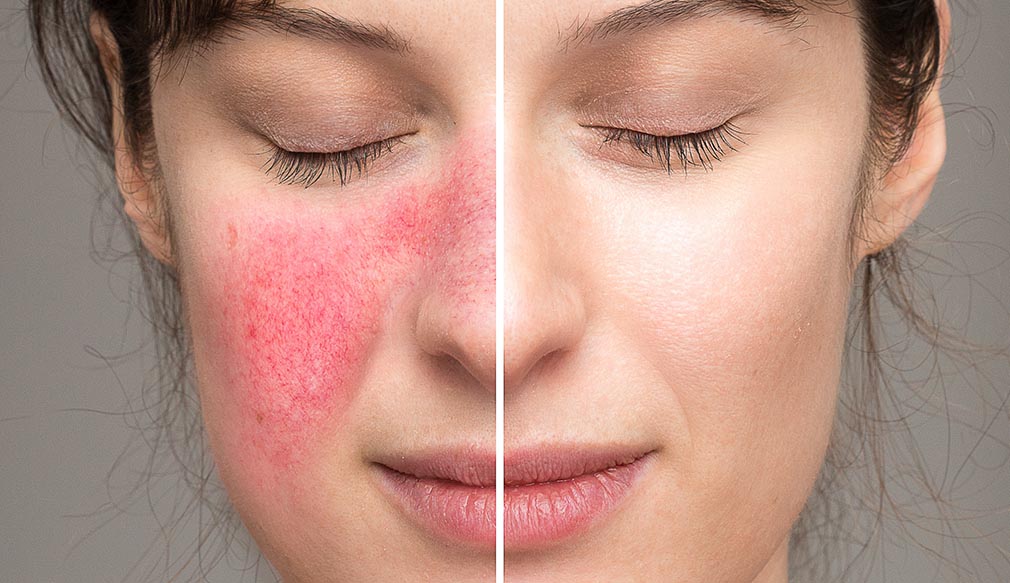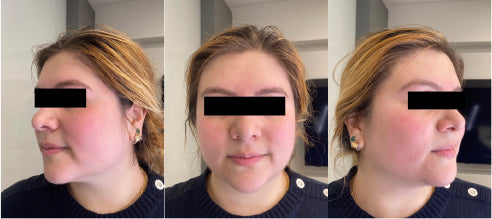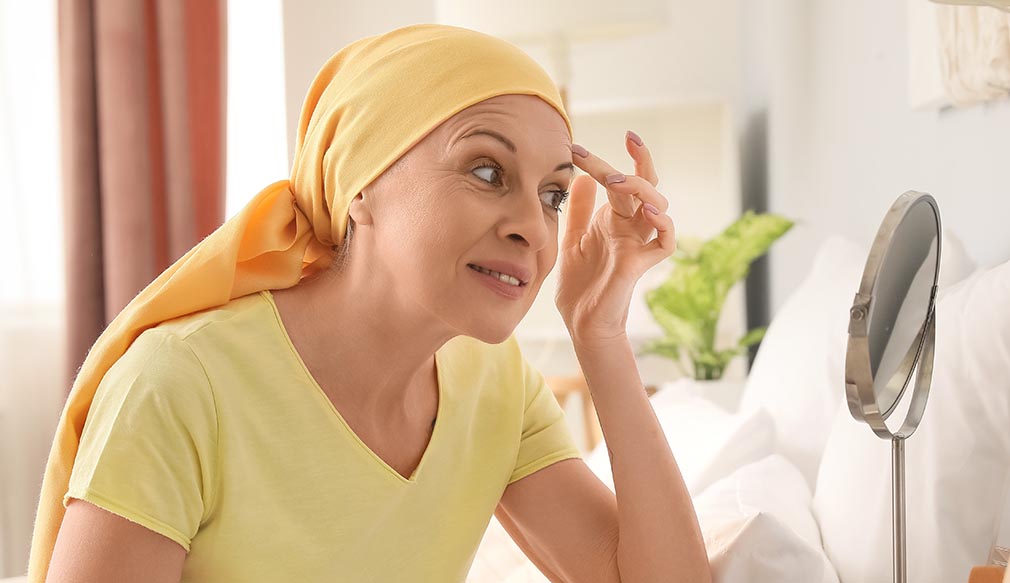
Rosacea Symptoms And Treatment With Topical Live Probiotics

Clinical Results Are In - Rosacea Reduction with Topical LIVE Probiotics
As a working licensed professional, you're likely familiar with the challenges posed by rosacea, marked by its hallmark symptoms of redness, pimples, swelling, and small superficial dilated blood vessels on the nose, cheeks, forehead, and chin. Traditionally treatment for rosacea focuses on controlling signs and symptoms. Most often this requires a combination of good skincare and prescription drugs with the duration of the treatment depending on the type and severity of the signs and symptoms. What makes rosacea difficult is that recurrence is common. What we have discovered at LaFlore is that rosacea is directly related to the health of the skin microbiome.This is significant because though you can’t diagnose rosacea, BUT you CAN improve their microbiome and have IMPACTFUL results.
Why The Skin Microbiome Matters
The skin microbiome refers to the diverse community of microorganisms that live on the surface of the skin. It is the key indicator of skin health and barrier function. This community includes bacteria, fungi, viruses, and other microorganisms. Just like the gut microbiome plays a crucial role in digestion and overall health, the skin microbiome plays a significant role in maintaining the health and integrity of the skin.How Topical LIVE Probiotics Treat Rosacea
Topical live probiotics contain live, beneficial bacteria that are applied directly to the skin. These probiotics are typically non-pathogenic strains of bacteria that have positive effects on the skin's health. By introducing beneficial bacteria to the skin, you are helping restore the balance of the skin microbiome – naturally. At LaFlore, we use patented technology that keeps the bacteria alive and shelf stable. This is a key differentiator because if the bacteria are alive, they work with the skin flora to balance the skin flora quickly and efficiently. Think of it as adding more worker bees to the workforce.Benefits of Topical LIVE Probiotics for Rosacea
- Normalizes skin temperature and pH levels, which fosters an environment conducive to the proliferation of beneficial bacteria.
- Helps produce ceramides, that play a key roles in antimicrobial and anti-inflammatory functions of the skin.
- Provide results without additional irritation!
Clinical Proof – Topical LIVE Probiotics Help Treat Rosacea
In a recent clinical 30-person study, a board-certified dermatologist saw a statistically significant increase in hydration and decrease in inflammatory diseases including rosacea, as well as a reduction in overall inflammation when subjects used LaFlore’s Live Probiotic Concentrated Serum for 14 days continuously.



Rosacea Results Overview
(Dermatologist Analysis)
Below you will find two participants as examples of how quickly LaFlore’s LIVE probiotics worked both visually and at the cellular level as noted by the dermatologist and the participant. Participant 1
 |
 |
- 25% visible reduction in this participant's rosacea and erythema.
- They also saw a 66% reduction in inflammation.
The participant reported that she felt her skin was significantly less irritated. On a scale from 5 being the worst and 1 being the best her skin could feel - she went from a 3 to a 1 for irritation. She also reported her sensitivity went from a 4 to a 2 in just a few days. That's a 50% decrease!
Participant 2

|
 |
50% reduction in visible signs of rosacea
66% reduction in inflammation
The participant reported a 25% improvement across the entire perception evaluation from sensitivity, hydration, redness, glow, texture, redness, and more.
Want to learn more about how to treat rosacea with topical LIVE probiotics? Book at strategy session.
Frequently Asked Questions:
Q: What are some of the key functions of the skin microbiome?
A: Protection - The microorganisms on the skin can help protect against pathogenic bacteria by competing for space and nutrients. They can also produce antimicrobial compounds that inhibit the growth of harmful microorganisms.
Immune System Support - The skin microbiome can interact with the immune system, helping to educate it and maintain its balance. This interaction is important for the skin's ability to respond to pathogens and other challenges.
Skin Health - The microbiome contributes to the maintenance of skin health by helping to regulate inflammation, supporting wound healing, and influencing skin conditions like rosacea.
Nutrient Metabolism - Some microorganisms in the skin microbiome can break down components of sweat and sebum, producing beneficial metabolites that can nourish the skin. This includes antimicrobials, ceramides, AHAs, BHAs, PHAs, antioxidants, vitamins, and minerals.
Q: What is the Real Cause of Rosacea?
A: What many do not realize is that individuals who have rosacea often have an overexpression of receptors in the skin microbiome, which leads to an increased inflammatory response by over-producing peptides such as cathelicidin.
Q: How Does Rosacea Impact the Skin Microbiome?
A: This increased inflammation can also cause the skin to increase in temperature, which affects bacterial growth and balance in addition to discouraging the growth of beneficial bacteria on the skin. When the skin temperature has increased, Staph. epidermidis can also release more proteins than normal, amping up the inflammation of the skin even more.
(Experimental Dermatology, 2020APR)
It’s also been determined that people who have rosacea have a higher concentration of bacterial strains like Firmicutes and Proteobacteria, and lower ratios of Actinobacteria. As shown here on bar second to the left. These changes in the diversity of the types of bacteria on the skin can leave it prone to infection and inflammatory responses, which is why it’s so important to support the skin microbiome's balance rather than disrupt it.
There is also one more cause for rosacea, beyond bacteria imbalances that many of us don’t even like to think about…
And that’s mites. The demodex mite to be exact.
This naturally occurring mite lives within the skin microbiome and at the end of its life cycle it explodes spreading even more harmful bacteria. If your client has an overgrowth of these mites and no way to counteract them it’s going to be an uphill battle for overcoming rosacea.





